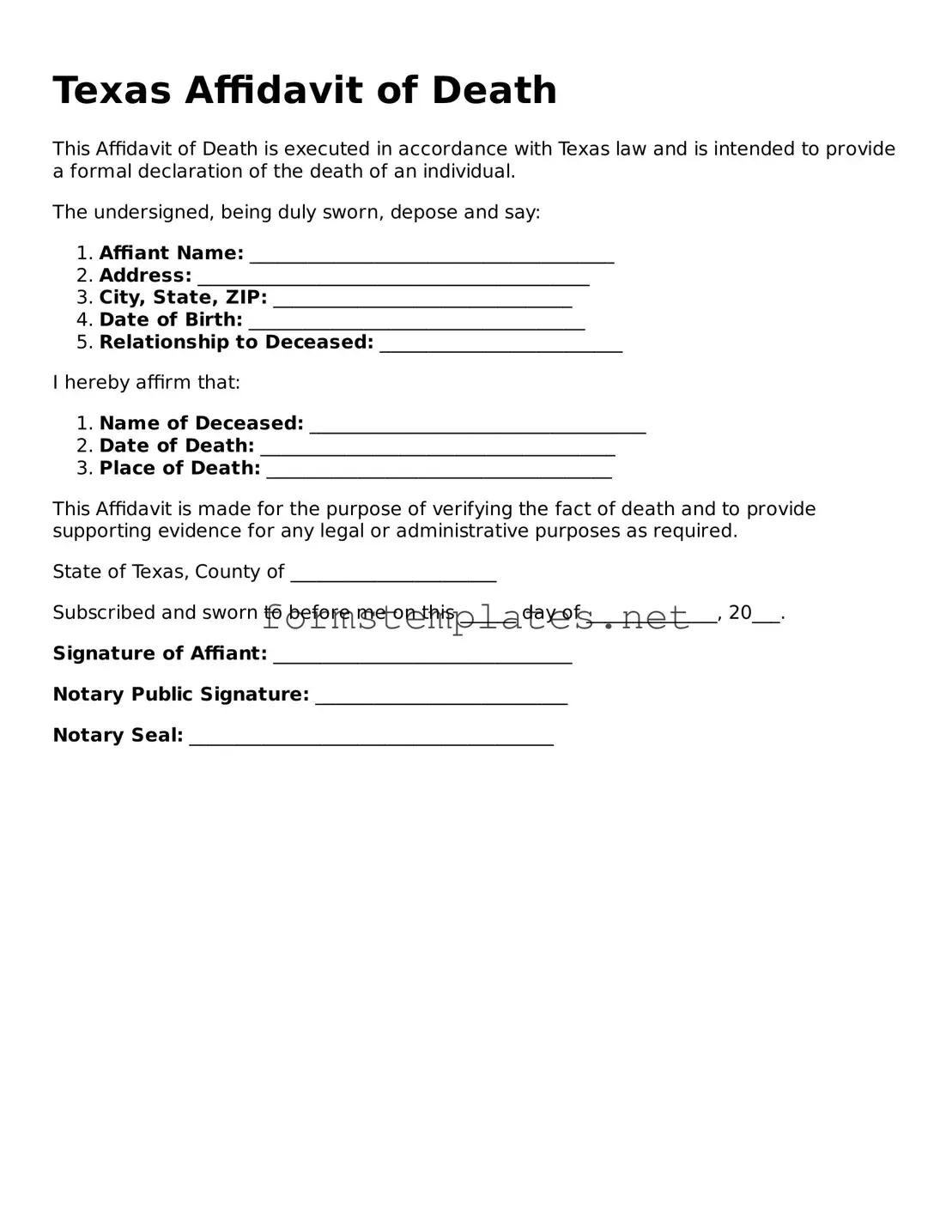Texas Affidavit of Death
This Affidavit of Death is executed in accordance with Texas law and is intended to provide a formal declaration of the death of an individual.
The undersigned, being duly sworn, depose and say:
- Affiant Name: _______________________________________
- Address: __________________________________________
- City, State, ZIP: ________________________________
- Date of Birth: ____________________________________
- Relationship to Deceased: __________________________
I hereby affirm that:
- Name of Deceased: ____________________________________
- Date of Death: ______________________________________
- Place of Death: _____________________________________
This Affidavit is made for the purpose of verifying the fact of death and to provide supporting evidence for any legal or administrative purposes as required.
State of Texas, County of ______________________
Subscribed and sworn to before me on this ______ day of ______________, 20___.
Signature of Affiant: ________________________________
Notary Public Signature: ___________________________
Notary Seal: _______________________________________
